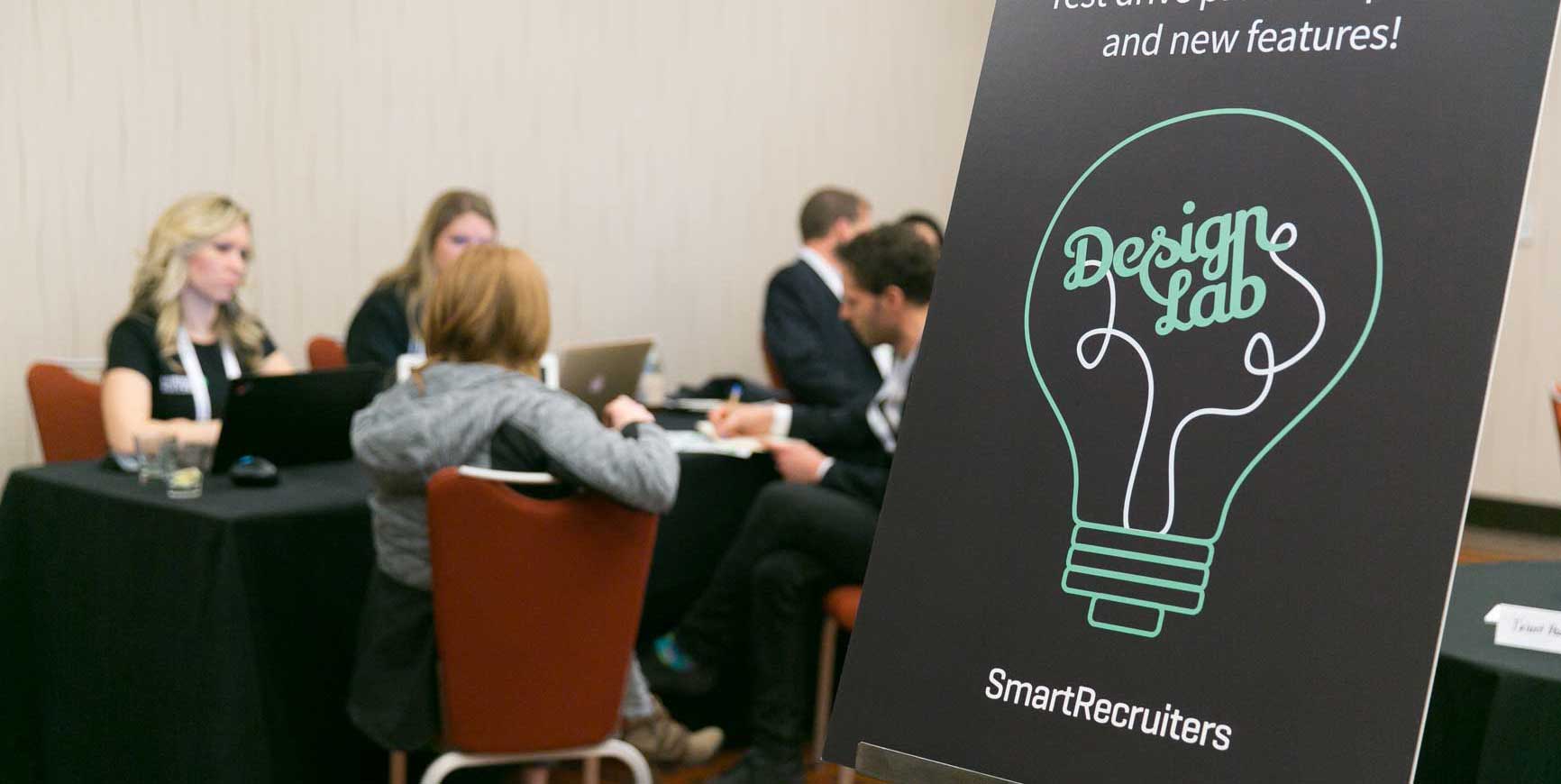As the “candidate experience” buzzword reaches a peak, what is the design team doing to weave its value into the product process at SmartRecruiters?
The design team at SmartRecruiters loves making hiring teams happy, but if bad candidate experience means bad news for good companies fighting to find great talent, how exactly can we design software for recruiting team productivity–but also for the job-seeking humans on the other side?
A good candidate experience is much more than candidate interaction – it goes beyond tools and dives deeper into company values and employer branding. Candidate experience involves the entire hiring team. If everyone works well together, it shows. Great collaboration results in better hiring process and hence better experience for your candidates.
Tools have a big role to play in enhancing your candidate experience. Here are some ways the design team at SmartRecruiters stays mindful of candidate experience when building our product:
1. Create Empathy with Candidate Personas
We’ve had conversations with job-seekers across the world to understand where the typical application and interview process fails to engage them. When the application process is the first line of communication with potential team members, it’s crucial to get every interaction right.
People who submit online applications come from all walks of life. It is important to understand the unique contexts that bring metal workers to click “Submit” on an application just as much as it is important to realize a software engineer’s thought process. But what all job-seekers have in common is the desire for a smooth, predictable, and personal process.
This means giving job-seekers a space to feel a sense of partial control in this often helpless-feeling process. We continue to build this into candidate-facing pieces like the Candidate Portal, whose UX was recently called out by a happy job-seeker:
But it also means the recruiter’s’ toolkit, in this case, needs to facilitate more consistent communication between recruiting teams and their candidates. The tools need to give all parties a foundation for a predictable process, as well as time and flexibility to set the right tone and relationship, for multiple (sometimes hundreds and thousands) of applicants.
2. Create Empathy via User Researching Recruiting Teams
On the other side of the relationship management coin, we can’t forget to empathize with the teams making the hiring decisions. The relentless interviews and usability tests we conduct with our customers (thank you!) help us find snags in how their hiring tools serve them, where in the process they struggle to keep it personal with the candidates, and how we can improve the structure and design to make everyone happy.
A big challenge is Dunbar’s number— the suggested cognitive limit to how many people a person can maintain stable social relationships (in which someone can relate to each person on an individual level). The million dollar question is, how do you scale Dunbar’s number? Recruiters are people, too, and they only have so much bandwidth to give candidates what they need to make a favorable decision about the company. The tool needs to be designed to take away some of that cognitive load so that recruiting teams can instead focus on being humans with their candidates.
3. Design Is a Party and You’re Invited
Now, what do we designers do with these gold mines of information about candidates and recruiter usability?
There are specific things we do to get the process started–creative things that designers are traditionally known for like design sprints, sketching, mind maps, or straight up diving into our preferred prototyping software with headphones on.
But if you will come down another level of recruitment-ception with me: at the highest level, our own teams at SmartRecruiters—just like yours—need to 100% believe and live our “You Are Who You Hire” philosophy. This means creating a dynamic environment where product managers, designers, engineers customer success and even sales can feel comfortable and willing to be a part of the problem-solving process. What I love about working at SmartRecruiters is that everyone is happy to constantly question, review, and iterate on our own practices with strong opinions, weakly held. After all, one usability test or research session can prove us wrong at any time.
It is very empowering to be able to adapt and share new information together, across all parts of the company. Whether we are engaging our colleagues in a design sprint, building user journeys or just having a casual conversation about how to make hiring better–design always starts at empathy: with job-seekers, recruiting teams, and finally, by making space in our own process to make sure our teams are at full capacity to think creatively with us.
If you’re on a recruiting team and are eager to be involved in our design process, you can be a part of the conversation, too. Join the SmartRecruiters’ Design Lab! Sign up here to participate in our ongoing feedback sessions. We are always testing something new!
